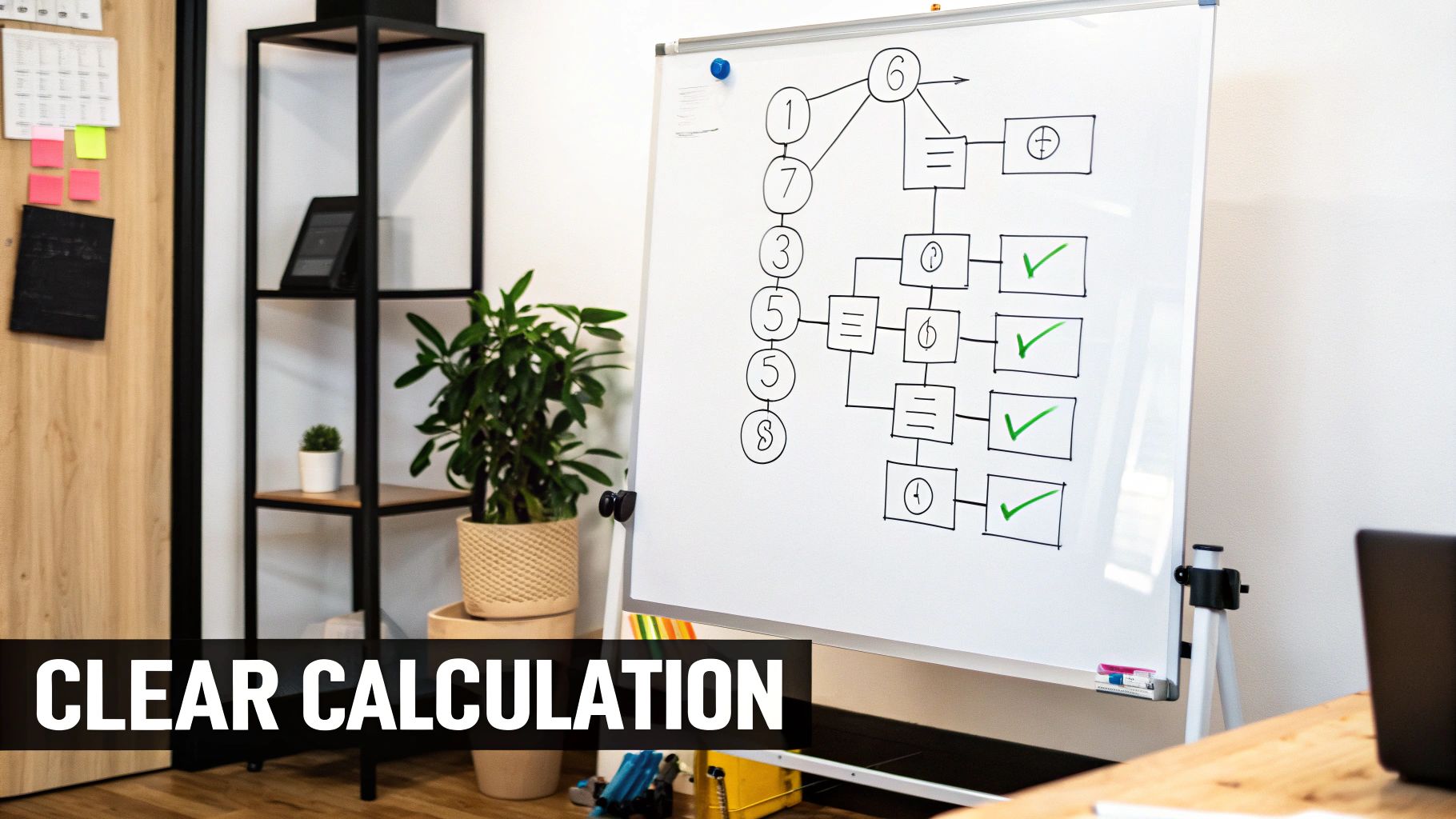Decoding the LTV:CAC Ratio: Your Business Health Indicator

The LTV:CAC ratio is a vital metric for evaluating the financial health of any business, particularly those operating on platforms like TikTok Shop. It compares the lifetime value (LTV) of a customer to the cost of acquiring them (CAC), providing insights into the profitability of customer relationships. Understanding this ratio is fundamental for making informed decisions regarding sales, marketing, and overall growth strategies.
Why the LTV:CAC Ratio Matters
This ratio reveals the long-term profitability of your customer relationships. It essentially assesses the return on investment (ROI) from each customer. A healthy LTV:CAC ratio indicates sustainable growth and efficient resource allocation. It signifies that your business isn't merely generating sales, but also cultivating profitable, long-term customer relationships. This is especially critical for TikTok Shop sellers navigating a competitive landscape and ever-changing market dynamics.
A desirable LTV:CAC ratio is typically around 3:1. This benchmark suggests that for every pound spent acquiring a customer, the business earns three pounds back over the customer's lifetime. For example, if your CAC is £1, your target LTV should be £3. Achieving this balance is essential for sustainable growth and evaluating the effectiveness of sales and marketing expenditures. If this target isn't met, adjustments to marketing strategies or improvements in customer retention may be necessary. Learn more about calculating the LTV:CAC ratio here: How to calculate LTV:CAC
Breaking Down the Ratio: LTV and CAC
A clear understanding of both LTV and CAC is crucial for effectively interpreting the LTV:CAC ratio.
-
Lifetime Value (LTV): This represents the total revenue expected from a single customer throughout their relationship with your business. A higher LTV indicates strong customer loyalty and repeat purchases. For TikTok Shop sellers, strategies for increasing LTV could include offering exclusive discounts to returning customers or developing engaging content to foster a strong community.
-
Customer Acquisition Cost (CAC): This encompasses all costs associated with acquiring a new customer, including advertising expenses, marketing efforts, sales team salaries, and software used for customer acquisition. For TikTok Shop sellers, managing CAC effectively could involve optimizing ad campaigns, collaborating with influencers, or participating in trending hashtag challenges.
LTV:CAC Ratio Components Breakdown
To understand the elements contributing to the LTV:CAC ratio, let's examine a detailed breakdown of its components. The following table illustrates the key components of both LTV and CAC, along with their definitions, calculation methods, and impact on the ratio.
The table below breaks down the key components that make up both sides of the LTV:CAC ratio, helping you understand which elements you need to track:
| Component | Definition | How to Calculate | Impact on Ratio |
|---|---|---|---|
| LTV Components | |||
| Average Purchase Value | The average amount spent per transaction | Total Revenue / Total Number of Transactions | Higher APV increases LTV |
| Purchase Frequency | How often a customer makes a purchase | Total Number of Transactions / Total Number of Customers | Higher purchase frequency increases LTV |
| Customer Lifespan | The average length of time a customer remains active | Average time between first and last purchase (across all customers) | Longer lifespan increases LTV |
| CAC Components | |||
| Marketing Costs | Expenses on advertising, promotions, etc. | Sum of all marketing expenses | Higher marketing costs increase CAC |
| Sales Costs | Salaries, commissions, and other sales-related expenses | Sum of all sales expenses | Higher sales costs increase CAC |
| Other Acquisition Costs | Costs related to software, tools, etc., used in customer acquisition | Sum of all other acquisition-related expenses | Higher other acquisition costs increase CAC |
By understanding the individual components of LTV and CAC, TikTok Shop sellers can identify areas for improvement and optimize their strategies for a healthier LTV:CAC ratio. This data-driven approach is essential for sustained success in the competitive e-commerce environment.
Calculating Your LTV:CAC Ratio: Beyond the Basic Formula

While the basic LTV:CAC formula offers a good starting point, truly understanding this crucial metric requires a more thorough approach. This means considering factors often overlooked, such as variations in customer retention and hidden acquisition costs. This section explores more advanced calculations that offer a more nuanced view of your business’s financial health. We'll go beyond simple assumptions and examine the practical aspects of measuring LTV and CAC in real-world scenarios.
Understanding the Nuances of LTV
Calculating Lifetime Value (LTV) isn't as simple as it may seem. Using a simple average can be misleading, particularly when dealing with diverse customer segments. For instance, high-spending customers can inflate the average, potentially hiding problems with the majority of your customer base.
Segmenting your customers into distinct groups (e.g., by purchase frequency, product type, or subscription tier) allows for more precise LTV calculations within each segment. Tools like Mergoio can be useful for segmenting and managing customer data. This detailed approach reveals valuable insights into which customer groups are the most profitable.
This granular understanding also allows you to refine your marketing and customer retention strategies. By focusing on the most valuable segments, you can target your efforts and resources more effectively. Knowing the different LTVs within your customer base helps you tailor strategies for maximum return.
Uncovering Hidden CAC
Calculating Customer Acquisition Cost (CAC) also requires a comprehensive approach. Many businesses focus solely on marketing spend, overlooking other important costs. These can include sales team salaries, onboarding expenses, and the cost of acquisition-related technology.
These hidden costs have a significant impact on your overall CAC. Accurately accounting for every expense tied to acquiring a customer, including indirect costs, is essential for a realistic view of profitability.
Consider, for example, the cost of onboarding new sellers onto an e-commerce platform like TikTok Shop. Failing to account for these expenses can lead to underestimating your true acquisition costs. This is where detailed profit tracking becomes crucial. Tracking every acquisition-related expense empowers you to make well-informed decisions about your sales and marketing strategies.
Industry Benchmarks and Adaptability
For SaaS businesses in the UK, a healthy LTV:CAC ratio is particularly vital due to the recurring revenue model. While a 3:1 ratio is generally considered desirable, businesses with lower price points may aim for a ratio between 2:1 and 4:1 to account for potentially higher churn rates.
For example, a UK SaaS company with an average churn rate of 1.5% can calculate LTV using this formula: LTV = Average Revenue Per User (ARPU) x Gross Margin x (1 / Churn Rate). This helps in setting realistic targets for both LTV and CAC to ensure long-term sustainability. More information on industry benchmarks can be found here: UK SaaS LTV:CAC Benchmarks.
It’s important to remember that a "good" LTV:CAC ratio depends on several factors, including your industry, business model, and growth stage. Startups, for example, often prioritize growth and may accept a lower ratio initially. Established businesses, on the other hand, typically aim for higher ratios reflecting greater efficiency.
LTV:CAC Ratio Calculation Methods by Industry
Different industries require specific approaches to calculating the LTV:CAC ratio. The following table compares common methods used in various UK sectors, highlighting the specific considerations for each:
| Industry | LTV Calculation Method | CAC Calculation Method | Special Considerations |
|---|---|---|---|
| E-commerce (e.g., TikTok Shop) | Average Order Value x Purchase Frequency x Average Customer Lifespan | (Marketing Spend + Sales Costs + Customer Service Costs) / Number of New Customers | Account for returns, discounts, and varying customer lifespans. Track precise costs. |
| SaaS | Average Revenue Per User (ARPU) x Gross Margin x (1 / Churn Rate) | (Marketing Spend + Sales Costs + Onboarding Costs) / Number of New Subscribers | Consider different subscription tiers and their respective churn rates. |
| Subscription Boxes | Average Monthly Recurring Revenue (MRR) x Average Subscription Length | (Marketing Spend + Cost of Goods Sold + Shipping Costs) / Number of New Subscribers | Factor in promotional periods and seasonal variations in subscription rates. |
Understanding these industry-specific calculations allows businesses in the UK to accurately assess their LTV:CAC ratio and optimize their growth strategies. Using tools that offer precise data tracking further enhances this process.
Interpreting Your LTV:CAC Ratio: The Story Behind the Numbers

Calculating your LTV:CAC ratio is just the first step. The real value lies in understanding what these figures mean for your business. This section explores how to interpret your LTV:CAC ratio and transform it into actionable strategic insights. This means looking beyond the raw data and understanding the narrative it reveals about your customer relationships, market standing, and long-term sustainability.
Understanding the Significance of Different Ratios
A 3:1 LTV:CAC ratio is often considered the ideal benchmark. This signifies that for every pound invested in acquiring a customer, you generate three pounds in return. However, this isn't a universal rule. Different growth phases and business models require nuanced interpretations.
For example, a high-growth startup might initially accept a lower ratio to prioritize rapid customer acquisition. Conversely, a mature business should target a higher ratio, reflecting operational efficiency and strong customer retention.
Additionally, monitoring the LTV:CAC ratio in the UK is crucial due to its impact on profitability and growth potential. For startups, particularly those experiencing rapid growth, a high LTV:CAC ratio can indicate untapped opportunities. For instance, a UK startup with a ratio significantly above the benchmark might be under-investing in customer acquisition and could benefit from increased marketing spend. A low ratio, however, could highlight inefficiencies in the sales funnel or a need to refine the product offering to boost customer value. This metric is essential for informed strategic decisions aligned with long-term financial goals. Learn more about LTV and CAC metrics for UK startups here: How startups should use CAC:LTV metrics.
Identifying Warning Signs and Opportunities
A declining LTV:CAC ratio can signal various problems. It might indicate rising acquisition costs, decreasing customer lifetime value, or a combination of both. This could stem from increased competition, ineffective marketing campaigns, or declining customer satisfaction. Therefore, it's important to understand not just the overall ratio but also the underlying trends in LTV and CAC individually. Calculating the LTV/CAC ratio requires knowing your Customer Acquisition Cost (CAC). Understanding and effectively managing your CAC is crucial, and resources like this guide can be helpful: Customer Acquisition Cost.
On the other hand, a consistently high LTV:CAC ratio might indicate untapped growth potential. This could suggest you're underinvesting in customer acquisition and could benefit from expanding your marketing efforts. It's vital to interpret your ratio within the context of your overall business strategy and current market conditions.
Segmenting Your Analysis for Deeper Insights
Analyzing your LTV:CAC ratio across different customer segments, acquisition channels, and product lines can reveal hidden opportunities. For instance, you might discover that one customer segment is considerably more profitable than others, allowing you to focus your marketing on attracting similar customers.
Similarly, analyzing your ratio by acquisition channel can pinpoint the most effective channels for acquiring high-value customers. This granular approach provides a more nuanced understanding of your business performance and helps optimize your strategies for maximum impact.
Communicating Your Insights to Stakeholders
Presenting your LTV:CAC ratio analysis to stakeholders effectively is crucial. Use clear visuals like charts and graphs to illustrate trends and highlight key takeaways. Explain the significance of the numbers in plain language, focusing on the implications for business growth and profitability.
This ensures everyone understands the metric's importance and its contribution to the company's overall success. By transforming raw data into actionable intelligence, you empower stakeholders to make informed decisions and support strategic initiatives that drive long-term growth. This proactive approach to data communication fosters a culture of data-driven decision-making within the organization.
LTV:CAC Ratio Benchmarks: How You Really Compare

Generic advice on LTV:CAC ratios often misses the mark. A "good" ratio isn't a fixed number; it depends heavily on your specific industry. This section explores realistic benchmarks for different UK business models, from subscription services to businesses with high-consideration purchases.
Understanding Sector-Specific Benchmarks
While the 3:1 LTV:CAC ratio is often quoted, it's not a universal rule. Businesses with high customer lifetime values, like SaaS companies, may target ratios exceeding 5:1. This is because they invest more upfront to acquire customers who will generate revenue over a longer period.
Conversely, industries with shorter customer lifespans, such as fast-moving consumer goods (FMCG), might find a 2:1 ratio perfectly acceptable. The quicker return on investment justifies the lower ratio. A UK subscription box service, facing potentially higher churn, might prioritize customer acquisition volume over a high LTV:CAC initially. A software provider, on the other hand, would likely focus on maximizing customer lifetime value and aim for a higher ratio from the outset.
Competition also matters. In fiercely competitive markets, customer acquisition costs (CAC) can be significantly higher, impacting what constitutes a healthy LTV:CAC. UK businesses in competitive sectors, like fintech, must carefully balance growth with sustainable economics. For more insights into LTV:CAC in the fintech world, explore this topic further.
Adapting to Business Cycles and Emerging Trends
LTV:CAC benchmarks aren't set in stone. They shift with market dynamics and economic conditions. During economic downturns, acquisition costs can rise while customer lifetime values fall, requiring adjustments to LTV:CAC strategies and expectations.
Emerging trends like the rise of subscription models and the focus on customer experience are also reshaping benchmarks. Continuous monitoring and adaptation of LTV:CAC targets are key. Leading UK companies consistently analyze these trends and refine their strategies accordingly.
Leveraging Data for Benchmarking and Optimization
Precisely measuring and tracking your LTV:CAC ratio, segmented by customer groups and acquisition channels, is vital for comparing against industry benchmarks. Using robust sales and profit tracking software is especially important for e-commerce sellers.
Tools like Mergoio empower e-commerce sellers, particularly those on platforms like TikTok Shop, to monitor sales, profits, and other key metrics. This data provides valuable insights, allowing for optimization of the LTV:CAC ratio. Sellers can then make informed decisions about marketing spend, customer retention, and overall growth strategies.
By understanding sector-specific benchmarks, adapting to market changes, and using data for ongoing optimization, UK businesses can leverage the LTV:CAC ratio to drive sustainable growth and improve profitability. This proactive approach ensures competitiveness in today’s dynamic business environment.
Transforming Your LTV:CAC Ratio: Actionable Improvement Strategies
This section offers practical strategies for enhancing both components of the LTV:CAC ratio. We'll explore tactics to elevate customer lifetime value (LTV) and refine acquisition efficiency, ultimately cultivating a healthier and more profitable enterprise.
Boosting Customer Lifetime Value (LTV)
Improving LTV revolves around nurturing stronger customer relationships and consistently delivering value that encourages prolonged engagement and increased spending.
-
Implement Effective Retention Programs: Loyalty programs, exclusive discounts, and early access to new products can incentivize repeat purchases and cultivate a sense of community. Consider tiered loyalty programs where increased spending unlocks greater benefits. This can substantially boost customer lifetime value over time.
-
Optimize Pricing Strategies: Experiment with pricing tiers and bundles to identify the optimal balance that maximizes revenue without adversely affecting customer churn. Analyze your customer segments and tailor pricing accordingly. This ensures each segment receives the most attractive offer, maximizing your total revenue.
-
Enhance Customer Experience: Seamless onboarding processes, responsive customer service, and personalized communication are vital for customer satisfaction and enduring loyalty. Proactively addressing customer feedback and resolving issues swiftly demonstrates a commitment to their success. This builds trust and fosters long-term relationships.
Improving Customer Acquisition Efficiency
Lowering your customer acquisition cost (CAC) involves optimizing marketing and sales processes for more efficient customer acquisition. This means attracting the right customers at the lowest possible cost.
-
Optimize Marketing Channels: Prioritize channels yielding the highest return on investment. For TikTok Shop sellers, this might include influencer collaborations, targeted ad campaigns, or organic content creation that resonates with their audience. Continuously analyze channel performance to pinpoint areas for improvement and budget allocation. Tools like Mergoio offer valuable insights into these aspects, assisting businesses in tracking and comprehending their spending effectiveness.
-
Improve Conversion Rates: Optimizing landing pages, streamlining checkout procedures, and presenting compelling calls to action can significantly improve conversion rates. A/B testing various elements of your marketing and sales funnels can reveal what resonates most effectively with your target audience. Even incremental improvements in conversion rates can substantially reduce your CAC over time.
-
Refine Targeting: Precisely targeting customers most likely to become long-term, high-value clients is crucial. This entails detailed customer segmentation and a comprehensive understanding of your ideal customer profile. Concentrate your marketing efforts on reaching these specific customer groups. By attracting the right customers from the outset, you enhance the likelihood of higher LTV and a stronger overall LTV:CAC ratio. This focused approach prevents businesses from squandering resources on customers unlikely to generate long-term value.
Maintaining Ratio Health During Growth Periods
Rapid growth often necessitates upfront investment, potentially impacting your LTV:CAC ratio temporarily. Maintaining equilibrium between aggressive growth and sustainable economics is essential.
-
Monitor and Adjust Strategies: Continuously monitor your LTV:CAC ratio and adapt your acquisition and retention strategies as necessary. This flexible approach allows you to respond to evolving market dynamics and maintain a healthy balance between growth and profitability.
-
Communicate with Stakeholders: Clearly communicate your LTV:CAC objectives and progress to investors and stakeholders. This ensures everyone remains aligned and understands the long-term vision, even if short-term outcomes fluctuate during periods of growth.
Leveraging Automation
Automation plays a vital role in enhancing efficiency without sacrificing customer experience.
-
Automate Repetitive Tasks: Automating email marketing campaigns, social media posts, and customer support interactions allows your team to concentrate on higher-value activities. This not only improves efficiency but also guarantees consistent messaging and prompt responses.
-
Personalize Automation: Tailor automated messages based on customer behavior and preferences. This delivers a personalized experience, even within an automated framework. For instance, targeted product recommendations or birthday discounts can be automated while still feeling individually tailored.
By implementing these strategies, UK businesses can transform their LTV:CAC ratio from a theoretical concept into a powerful engine for growth and profitability. This ongoing endeavor requires continuous monitoring, adaptation, and a commitment to delivering exceptional customer value. This approach, combined with data-driven insights from tools like Mergoio, empowers businesses to not only grasp their LTV:CAC ratio but also utilize it strategically for sustained success.
Avoiding Critical LTV:CAC Ratio Mistakes: Lessons From The Trenches
Calculating your LTV:CAC ratio is crucial. However, misinterpreting it or making calculation errors can lead to costly mistakes. This section explores common pitfalls and offers practical solutions.
Common LTV:CAC Ratio Mistakes
One major mistake is neglecting hidden costs when calculating CAC (Customer Acquisition Cost). Many businesses focus solely on direct marketing, overlooking indirect costs like sales team salaries, onboarding, and software subscriptions. For example, forgetting onboarding costs for new sellers on TikTok Shop can significantly underestimate your true CAC.
Another common error is using average LTV (Lifetime Value) figures. A single average LTV can be misleading. Different customer segments have varying purchase behaviors and lifespans. High-spending customers might skew the average, masking problems with lower-value customers.
Furthermore, failing to adapt your LTV:CAC benchmark to your specific industry and business model is a common oversight. While a 3:1 ratio is a general guideline, businesses with high customer lifetime values, like SaaS companies, might aim for 5:1 or higher. Conversely, businesses with shorter customer lifespans might find a lower ratio acceptable.
Finally, neglecting to monitor the LTV:CAC ratio over time can lead to missed opportunities. Regularly tracking the ratio and its components allows you to identify trends and adapt proactively.
Error-Proofing Your LTV:CAC Approach
To avoid these pitfalls, consider these strategies:
-
Detailed Cost Tracking: Track all customer acquisition expenses, including indirect costs. Use sales and profit tracking software like Mergoio for accurate CAC calculations.
-
Customer Segmentation: Segment customers based on purchase frequency, product type, or other relevant factors. Calculate LTV for each segment for a more accurate view.
-
Industry Benchmarking: Research LTV:CAC benchmarks specific to your industry. Use this to set realistic targets and evaluate your performance.
-
Continuous Monitoring: Regularly track your LTV:CAC ratio and its components to identify trends, react to market changes, and adjust strategies.
-
Transparent Communication: Clearly communicate LTV:CAC objectives and progress to stakeholders, explaining the numbers’ significance.
Balancing Short-Term And Long-Term Goals
Maintaining a healthy LTV:CAC ratio requires balancing short-term demands with long-term sustainability. Investors might pressure for immediate results, but focusing solely on short-term gains can jeopardize long-term health.
Communicate the importance of long-term LTV:CAC optimization to stakeholders. Explain how investing in customer retention and improving LTV leads to greater profitability and sustainable growth. Data-driven arguments for long-term strategies can align stakeholders with your vision.
Looking for a robust tool to track your sales and profits on TikTok Shop? Mergoio offers a comprehensive dashboard and real-time analytics. Explore Mergoio today and replace guesswork with data-driven insights.

Leave a Reply